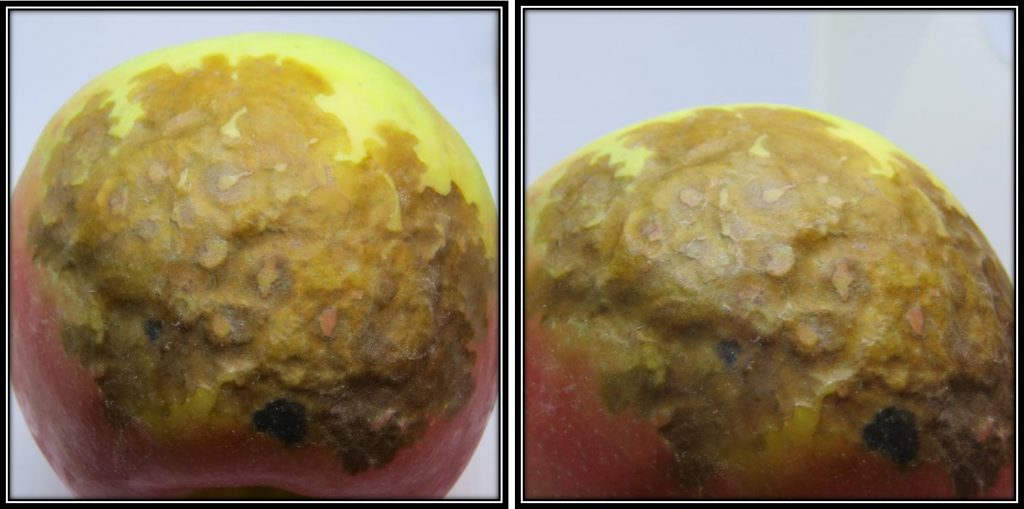
Features
Fruit
Production
Honeycrisp storage recommendations revisited
September 20, 2017 By Ines Hanrahan (Washington Tree Fruit Research Commission WTFRC) and Rob Blakey (Washington State University WSU)
 Carbon dioxide damage appears as sunken areas of uneven texture. Typical expression of symptoms can resemble a wormy pattern and affected areas may darken when infected with secondary fungi. WTFRC, 2017
Carbon dioxide damage appears as sunken areas of uneven texture. Typical expression of symptoms can resemble a wormy pattern and affected areas may darken when infected with secondary fungi. WTFRC, 2017September 20, 2017, Washington – Storing Honeycrisp long-term while achieving good packouts and maintaining fruit of acceptable eating quality in the second part of the storage season has been a continuous challenge for our industry.
Up until last year, most packers had become comfortable knowing what types of performance to expect out of each lot. With Honeycrisp, you basically had to control your decay, manage chilling injuries (mainly soft scald), and bitter pit. We did know that this apple was sensitive to carbon dioxide injury but, aside from the occasional cavities, most packers did not report having significant problems. READ MORE
Print this page